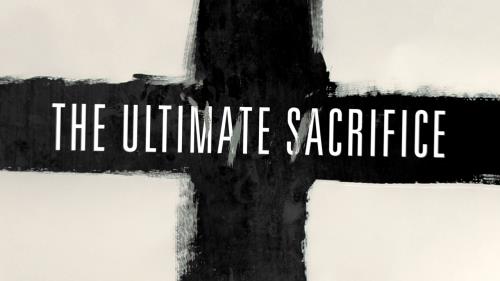-
Jesus, Barnabas And Pontius Pilate Series
Contributed by Tim Smith on Nov 28, 2017 (message contributor)
Summary: In our Scripture today, we have Jesus bound by the Sanhedrin, convicted of blasphemy and sentenced to death but there’s one problem: only Rome can put someone to death. So after receiving 40 lashes, Jesus is taken before the Roman governor Pontius Pilate
Jesus, Barnabas and Pontius Pilate
Mark 15:1-15
Map of Jerusalem. In our Scripture today, we have Jesus bound by the Sanhedrin, convicted of blasphemy and sentenced to death but there’s one problem: only Rome can put someone to death. So after receiving 40 lashes, Jesus is taken before the Roman governor Pontius Pilate. It is now 6 AM. On the screen you’ll see a map of the city of Jerusalem and you’ll see Caiaphas’ house. Picture of Antonio Fortress. Jesus is led by the temple guard through the city streets to the Fortress Antonio with the Sanhedrin following behind. Fortress Antonio was built by Pilate adjacent to the temple. It was at the heart of the city and of course this grieved the Israelites that there was a Roman garrison in the heart of the holy city. The walls were shared with the northern wall of the temple mount. Picture of stone pavement. Now if you were go to the Holy Land, you would be taken along the via delorosa, the way of suffering, where you would walk the stations of the cross. This begins at the Sisters of Sion convent. In the basement of the convent, you would see excavations that reveal a stone pavement is the traditional place where Jesus stood when he was sentenced to die. A large crowd is now gathering to see the verdict against Jesus.
Picture of the crowd. In both the trial of Jesus, before the Sanhedrin and now Pilate, Jesus remains virtually silent as he is accused of crimes for which his accusers hope he will be put to death. To be accused falsely and have a death sentence looming over your head and saying nothing, that is strange to say the least. In fact, Pilate is amazed by Jesus’ virtual silence. The silence of Jesus.
King of the Jews. This is the crime for which he has been sentenced. In that time, Caesar was king of the Jews and all the Roman Empire. Anyone who claimed to be king of the Jews was setting himself up to be against Caesar and thus leading an insurrection. As Pilate interrogates Jesus, he asks, "Are you the king of the Jews?" Jesus gives a rather cryptic answer, “Yes, it is as you say.” Then Pilate asked if Jesus wanted to hear the charges against him and to the great amazement of Pilate, Jesus says nothing. This was his opportunity to respond to those charges and Jesus remains utterly silent.
I believe Jesus has in mind a passage of Scripture from Isaiah 53. In Isaiah’s day, these words were spoken to those who suffering in captivity in Babylon, and they believed they were suffering for the sins of the rest of the Israelites. Previous Slide with Isaiah 53:6-7 on it. But in Jesus, this Scripture takes on new life and new meaning. “We all, like sheep, have gone astray, each of us has turned to his own way; and the Lord has laid on him the iniquity of us all. He was oppressed and afflicted, yet he did not open his mouth; he was led like a lamb to the slaughter, and as a sheep before her shearers is silent, so he did not open his mouth.” Jesus did not open his mouth and was offering himself as a lamb to the slaughter for the sins of the world.
The silence of Jesus represents his resignation or his determination to die. Jesus is not going to defend himself and try to get out from under the charges. Jesus believed the cross was part of God’s plan for him, that by his suffering and death, he would save all humankind. And so he tells his disciples before he arrives to Jerusalem, “The son of Man will be betrayed and put into the hands of sinners and he will die.” At the last supper, when Jesus says, “This is my body given for you and this is my blood given for you, poured out for you and for many for the forgiveness of sins.” So Jesus understands that his death is necessary for salvation.
The Atonement. How does that happen? That’s the million dollar question with which theologians have wrestled throughout the millennia. The question is, How do we understand the atonement, the fact that humanity was estranged from God and Jesus’ death reconciles us to God? There are a variety theories about the atonement and over the next three weeks we’ll at three different theories of the atonement. The question is, “How does Jesus’ death save us from our sins?” We have one picture of that in our Scripture today.
Christians believe that Jesus’ death was redemptive for the whole world. Jesus didn’t die a disillusioned prophet or as a martyr and that was the end of the story. Christians believe his death was a vehicle by which he was saving the whole world. Now we see an image of this atonement in what happens with Barrabbas. Picture of Barabbas.

 Sermon Central
Sermon Central



